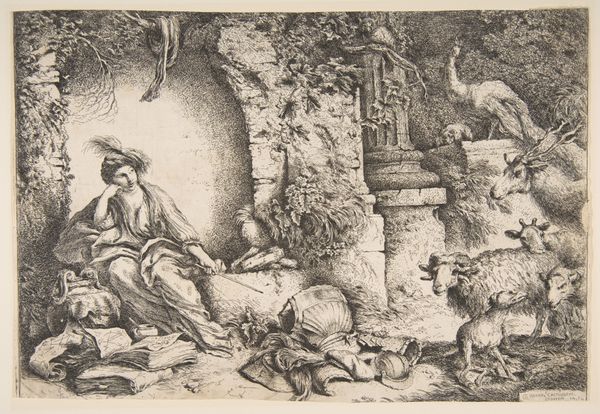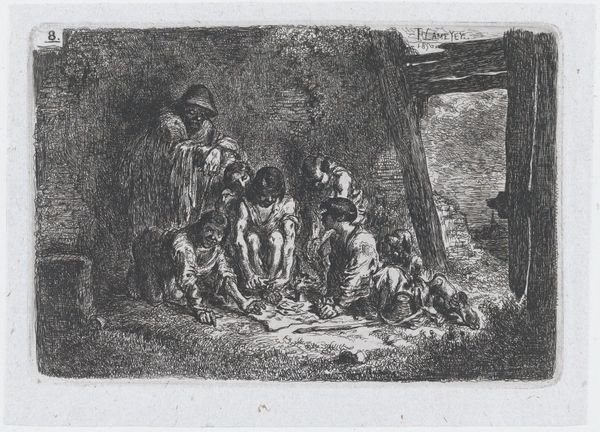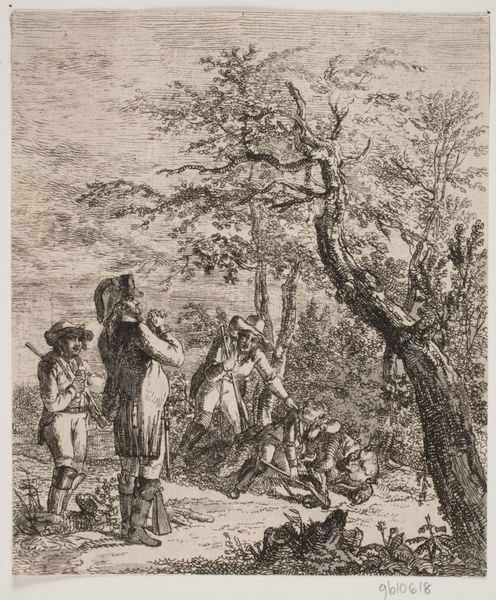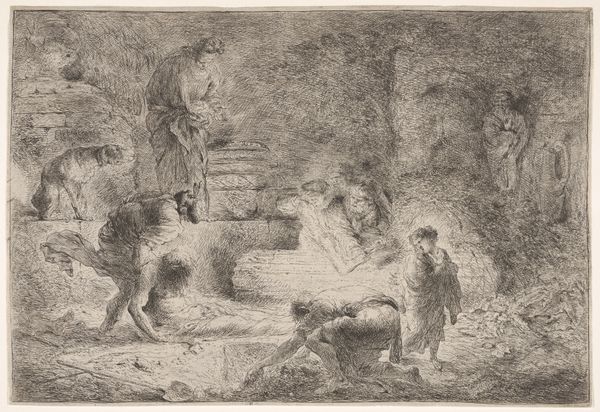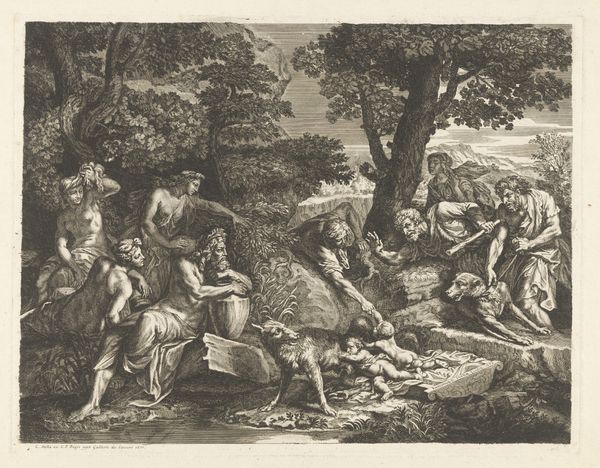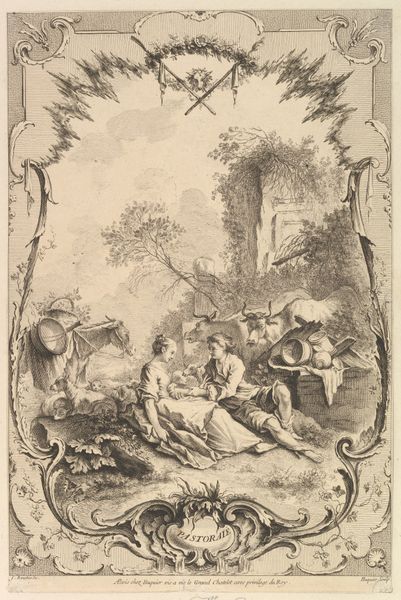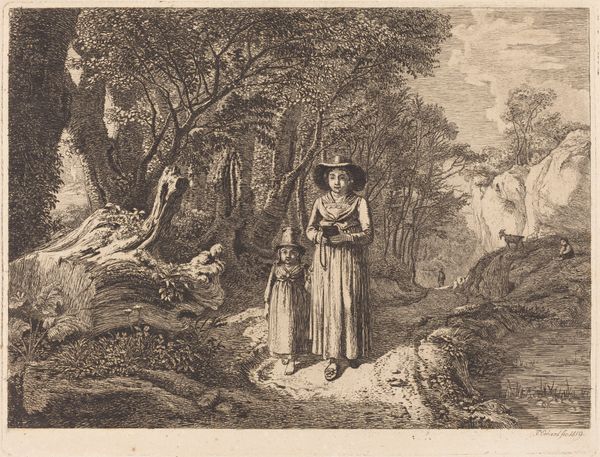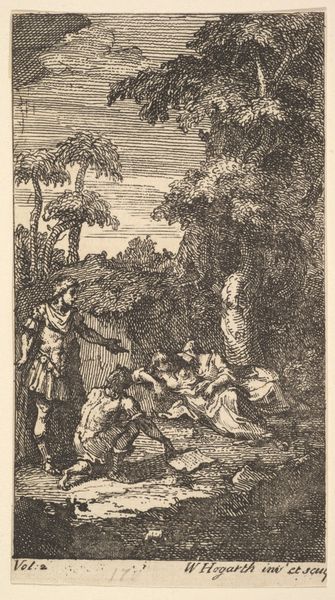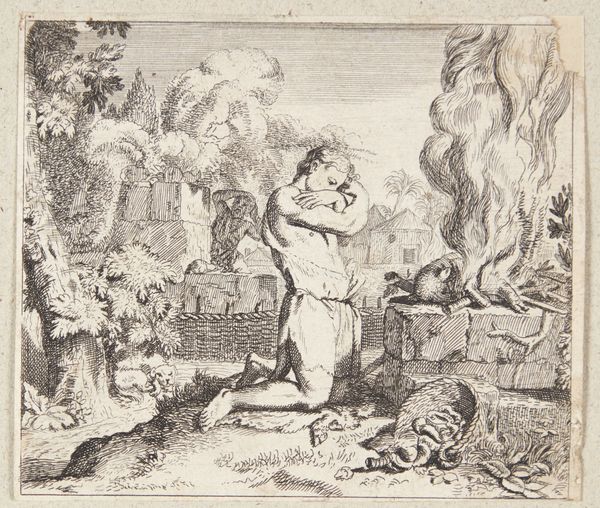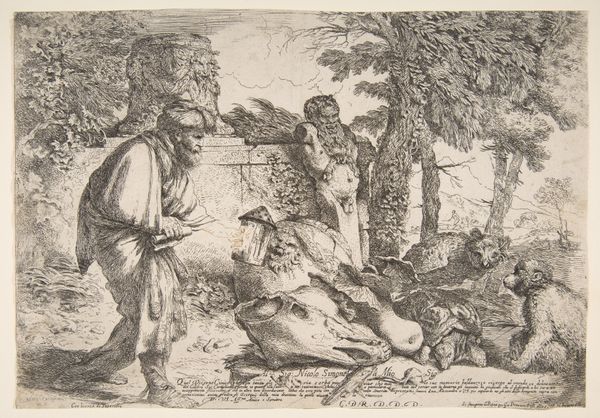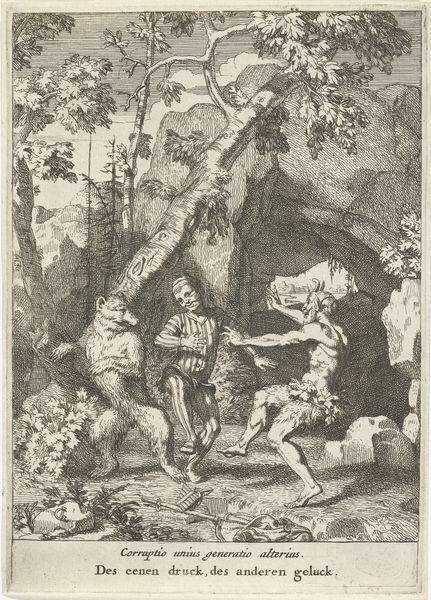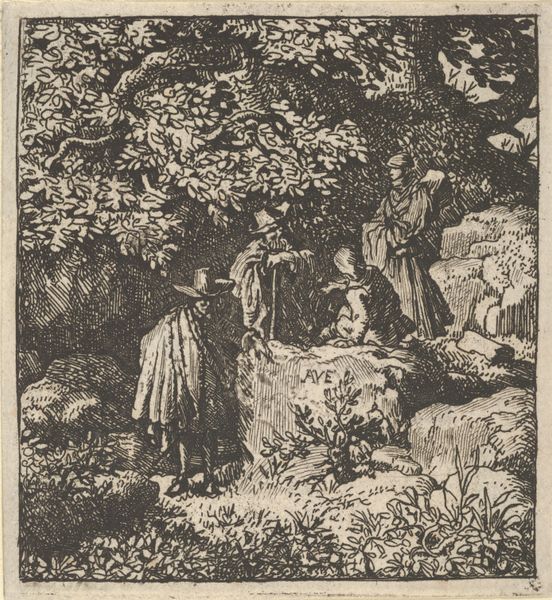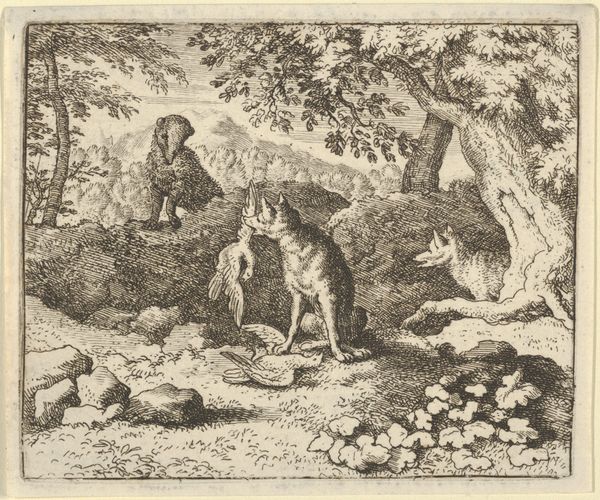
Raising of Lazarus 1645 - 1650
0:00
0:00
drawing, print, etching
#
drawing
#
baroque
# print
#
etching
#
human-figures
#
figuration
#
human
#
history-painting
Dimensions: sheet: 8 11/16 x 12 3/8 in. (22 x 31.4 cm)
Copyright: Public Domain
Editor: Giovanni Benedetto Castiglione’s etching, "Raising of Lazarus," created sometime between 1645 and 1650, is a powerful rendition of a well-known biblical story. What strikes me most is the dramatic contrast between the dark shadows of the tomb and the brilliant light emanating from Christ. What can you tell us about it? Curator: The theatrical use of light is indeed key to understanding this piece in its socio-political context. Consider how the Catholic Church, in the wake of the Reformation, used art as a powerful tool to reaffirm its authority and inspire religious fervor. Castiglione, working in Genoa, was undoubtedly aware of this artistic mandate. Editor: So, the dramatic light is not just for aesthetics, but a statement? Curator: Precisely. The Raising of Lazarus becomes a visual declaration of Christ's, and by extension the Church's, power over death. The etching, made accessible through printmaking, served a wider public, bringing this message of divine authority directly into homes and smaller religious institutions. What do you notice about the composition? How does Castiglione use the arrangement of figures? Editor: Everyone is huddled together, except Christ. He's separate, standing apart from them, which really emphasizes his divinity in that pivotal moment. Curator: And who would have had access to images like these at this time? Did they have multiple meanings? Editor: I imagine this print could be interpreted on many levels, depending on who viewed it. For the faithful, it reinforced belief; for others, it might have been a symbol of the Church’s growing influence. It’s all very political when you start looking beyond the surface narrative. Curator: Exactly. Understanding the politics of imagery helps us appreciate how art functions within its specific historical moment and shapes cultural perception. Editor: I see now how something like an etching can be much more than a religious scene. Thanks for this fascinating insight.
Comments
No comments
Be the first to comment and join the conversation on the ultimate creative platform.
